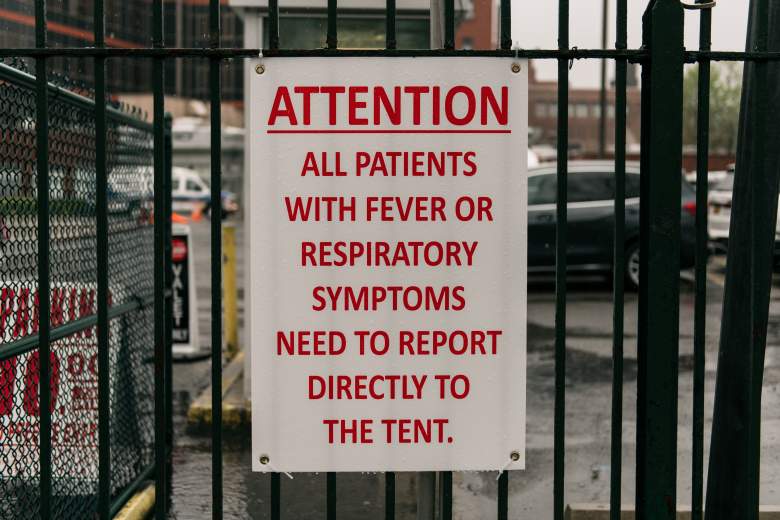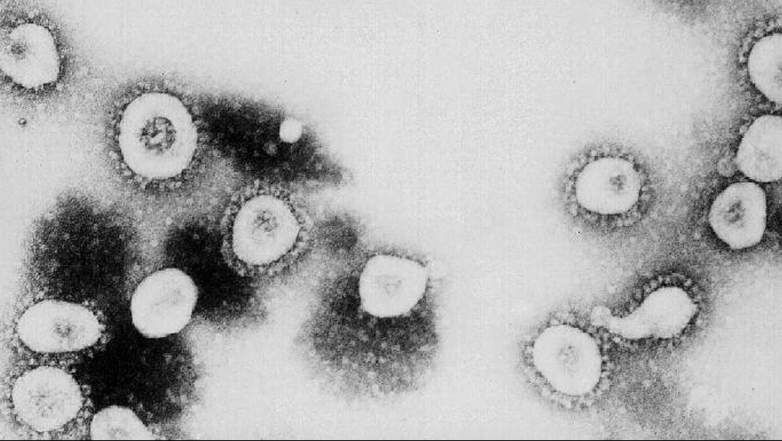
A growing body of research is finding that some people test positive for COVID-19 but are asymptomatic. This finding has important policy implications for places like nursing homes, where symptom-less but positive staff might interact with the vulnerable. It also has broader societal implications as some states end stay-at-home orders.
However, can people spread COVID-19 if they don’t have symptoms? There’s still a lot we don’t know about coronavirus, and research is still coming in. However, experts and research studies have repeatedly found that people who are asymptomatic can spread the infection if they have it.
According to the Centers for Disease Control and Prevention, “COVID-19 is thought to spread mainly through close contact from person-to-person. Some people without symptoms may be able to spread the virus. We are still learning about how the virus spreads and the severity of illness it causes.”
The CDC reports:
The virus is thought to spread mainly from person-to-person.
Between people who are in close contact with one another (within about 6 feet).
Through respiratory droplets produced when an infected person coughs, sneezes, or talks.
These droplets can land in the mouths or noses of people who are nearby or possibly be inhaled into the lungs.
COVID-19 may be spread by people who are not showing symptoms.
As far back as March 19, it was becoming clear that asymptomatic carriers were spreading the virus more than was previously thought. “Asymptomatic and mildly symptomatic transmission are a major factor in transmission for Covid-19,” Dr. William Schaffner, a professor at Vanderbilt University School of Medicine and longtime adviser to the CDC, told CNN. “They’re going to be the drivers of spread in the community.”
Asymptomatic carriers can represent a large percentage of the population, some studies have found. An Icelandic study found that 50% of the infected were asymptomatic.
In addition, some people go on to develop symptoms but remain infectious in the days before they do.
In April, the Centers for Disease Control and Prevention (CDC) director, Dr. Robert Redfield, told a National Public Radio affiliate: “Of those of us that get symptomatic, it appears that we’re shedding significant virus in our oropharyngeal compartment, probably up to 48 hours before we show symptoms. This helps explain how rapidly this virus continues to spread across the country because we have asymptomatic transmitters.”
Here’s what you need to know:
Studies Show That People Without Symptoms Have Spread COVID-19 & Some of Them Later Develop Symptoms Themselves

GettyThis photo from the Centers for Disease Control and Prevention (CDC) shows a microscopic view of the Coronavirus at the CDC in Atlanta, Georgia.
A growing body of research has found that people without symptoms are infectious.
The article Asymptomatic Transmission, the Achilles’ Heel of Current Strategies to Control Covid-19 ran in the New England Journal of Medicine on April 24, 2020. According to this article, “Traditional infection-control and public health strategies rely heavily on early detection of disease to contain spread.” The article says that COVID-19 differs from other viruses in the past because of the “high level of SARS-CoV-2 shedding in the upper respiratory tract, even among presymptomatic patients, which distinguishes it from SARS-CoV-1, where replication occurs mainly in the lower respiratory tract.”
The researchers note that one study of a Washington State nursing home found that “more than half the residents of this skilled nursing facility (27 of 48) who had positive tests were asymptomatic at testing.” The authors noted that “live coronavirus clearly sheds at high concentrations from the nasal cavity even before symptom development.”
John Hopkins University reported on May 12 that the lab study in Iceland “suggests that as many as 50% of people who have the disease show no symptoms. A study conducted in Singapore showed that patients with COVID-19 were able to spread the disease without showing symptoms themselves.” Gigi Gronvall, an immunologist and senior scholar at the Johns Hopkins Center for Health Security and an associate professor at the Johns Hopkins Bloomberg School of Public Health, told the university’s Hub publication that a “growing body of results shows that people who are asymptomatic appear to have the same viral load as symptomatic cases. This means that, whether people have symptoms or not, they carry the same amount of virus inside them. This suggests that transmission is possible equally from both asymptomatic patients and noticeably sick patients.”
She said this is unusual for a virus and that testing can still detect the virus in patients without symptoms.
On April 1, a World Health Organization press conference speaker, Dr. Maria Van Kerkhove, revealed that “from data that we’ve seen from China, in particular, we know that individuals who are identified, who are listed asymptomatic, about 75% of those actually go on to develop symptoms.”
The expert said:
Those individuals who are identified as asymptomatic at the time of reporting and go on to develop symptoms, so 75% of those, are actually pre-symptomatic. They’re in that pre-symptomatic phase. And then of course most of the people that are identified are symptomatic. And we know that through transmission, the transmission of this virus is driven by people who are asymptomatic.
Another study, Clinical characteristics of 24 asymptomatic infections with COVID-19 screened among close contacts in Nanjing, China, also found that some asymptomatic patients go on to develop symptoms.
…none of the 24 asymptomatic cases presented any obvious symptoms while nucleic acid screening. Five cases (20.8%) developed symptoms (fever, cough, fatigue, etc.) during hospitalization. Twelve (50.0%) cases showed typical CT images of ground-glass chest and 5 (20.8%) presented stripe shadowing in the lungs. The remaining 7 (29.2%) cases showed normal CT image and had no symptoms during hospitalization.
A May 5 study in the Annals of Internal Medicine, The Incubation Period of Coronavirus Disease 2019 (COVID-19) From Publicly Reported Confirmed Cases: Estimation and Application, looked at the COVID-19 incubation period and found:
Fitting the log-normal model to all cases, we estimated the median incubation period of COVID-19 to be 5.1 days… We estimated that fewer than 2.5% of infected persons will show symptoms within 2.2 days…of exposure, and symptom onset will occur within 11.5 days… for 97.5% of infected persons.
A March 16, 2020 study called Presymptomatic Transmission of SARS-CoV-2 — Singapore, January 23–March 16, 2020 also found that “in the four clusters for which the date of exposure could be determined, presymptomatic transmission occurred 1–3 days before symptom onset in the presymptomatic source patient.” This study identified different clusters in which COVID-19 spread before people had symptoms. In one case:
A woman aged 55 years (patient A1) and a man aged 56 years (patient A2) were tourists from Wuhan, China, who arrived in Singapore on January 19. They visited a local church the same day and had symptom onset on January 22 (patient A1) and January 24 (patient A2). Three other persons, a man aged 53 years (patient A3), a woman aged 39 years (patient A4), and a woman aged 52 years (patient A5) attended the same church that day and subsequently developed symptoms on January 23, January 30, and February 3, respectively.
The researchers found that “presymptomatic transmission might occur through generation of respiratory droplets or possibly through indirect transmission.”
A May 2020 article, Clinical characteristics of 24 asymptomatic infections with COVID-19 screened among close contacts in Nanjing, China, found that people infected by asymptomatic carriers could get the illness more severely in some cases. “Overall, the asymptomatic carriers identified from close contacts were prone to be mildly ill during hospitalization. However, the communicable period could be up to three weeks and the communicated patients could develop severe illness,” this study found.
An April 15 study, Temporal dynamics in viral shedding and transmissibility of COVID-19, “observed the highest viral load in throat swabs at the time of symptom onset.” However, the study also found that “44% (95% confidence interval, 25–69%) of secondary cases were infected during the index cases’ presymptomatic stage, in settings with substantial household clustering, active case finding and quarantine outside the home. Disease control measures should be adjusted to account for probable substantial presymptomatic transmission.”
One April 13 study, Universal Screening for SARS-CoV-2 in Women Admitted for Delivery, examined women in an obstetrical population in New York. “29 of the 33 patients who were positive for SARS-CoV-2 at admission (87.9%) had no symptoms of Covid-19 at presentation.”
A March 20 study looked at “Asymptomatic and Presymptomatic SARS-CoV-2 Infections in Residents of a Long-Term Care Skilled Nursing Facility — King County, Washington.” The study found:
Approximately half of all residents with positive test results did not have any symptoms at the time of testing, suggesting that transmission from asymptomatic and presymptomatic residents, who were not recognized as having SARS-CoV-2 infection and therefore not isolated, might have contributed to further spread.
READ NEXT: California Doctor Criticizes State’s COVID-19 Approach